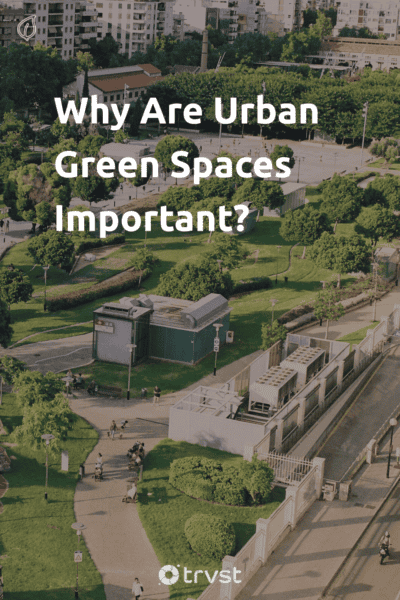Why Are Urban Green Spaces Important?
Statistics predict that 68% of the global population will live in urban spaces by 2050. In this current period, overpopulation is a problem, and more people are moving into cities frequently. Real estate developers are destroying existing green areas to create room to accommodate the growing population,
Already, there aren’t adequate urban green spaces. The government and real estate developers need to consider the importance of sustainable development during urban planning. A significant proportion of land area allocated for the development of urban nature should be set aside.
Here, we will explore the various definitions of green space and its examples. We will also discuss the benefits of building green cities. These benefits include public health improvement and mental well-being, protection of wildlife, and economic growth.
Related Read: Sustainable Urban Development.
What is an urban green space?

According to the World Health Organization, an urban green space is an urban land covered by vegetation. A green space refers to the trees and grasses on the streets4, gardens, parks, green roofs, and ponds.
The Oxford Dictionary defines an urban green space as an area of grass, trees, or other vegetation set apart for recreational or aesthetic purposes in an urban environment.
These definitions aptly describe the essence of green spaces in urban environments. These areas are natural and free from pollutants. There are two kinds of green spaces- human-made and natural.
A human-made urban green space refers to public green spaces created for recreational purposes. These spaces are urban gardens, green roofs, and urban parks, while a natural green space refers to natural wildlife habitats like wetlands and forests.
Urbanists created large parks within inner city spaces in the 19th century. They referred to it as the lungs of the city. These small patches of green infrastructure improved city life and added a breath of fresh air.
In these current times, urbanization has encroached into naturally existing green spaces. Cities are now long stretches of concrete without green areas. Urban planning without green areas reduces the quality of life. Therefore, cities must include environmental and ecological concepts in their plans.
Examples of Green Spaces
Street Trees
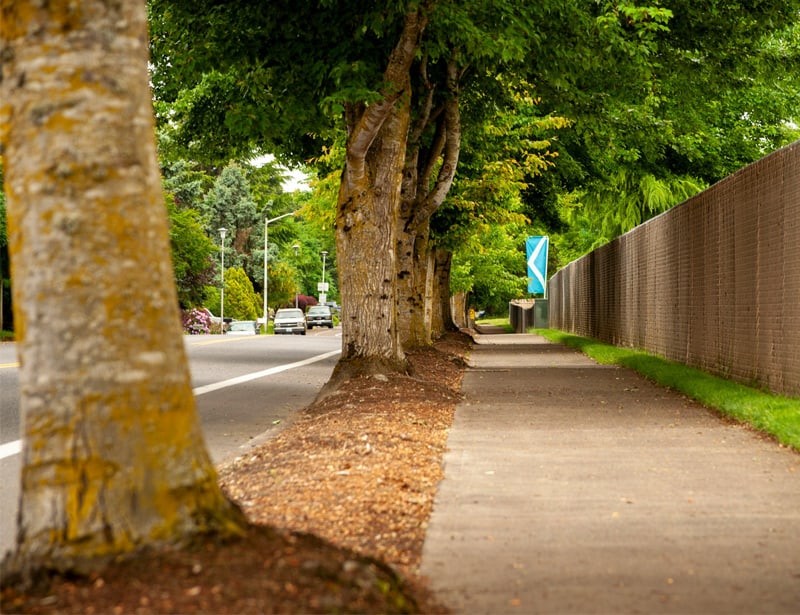
An example of nature in urban landscapes is trees. There should be at least three trees on the street. It improves the aesthetics and air quality of urban areas. It also encourages biodiversity, like birds, squirrels, and butterflies, in an urban space because it provides habitats for them.
The trees planted on the streets should be suitable for urban spaces, meaning it doesn't have an extensive root structure that could damage urban infrastructures.
Landscape Around Buildings
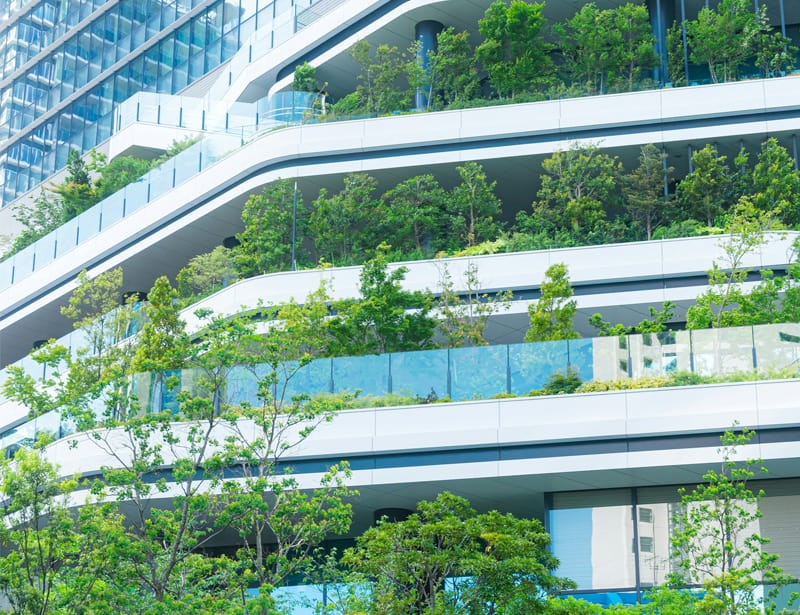
Landscapes around buildings should include trees, grass and lawn areas, ponds, and sustainable urban drainage systems (SUDS). The natural environment designed around urban dwellers provides shade and cooling, reducing the need for air conditioners.
It helps them reduce their electricity bills. It also encourages them to take a walk outside and admire their surroundings. Studies also show that views of green infrastructure from office spaces improve concentration and work productivity. It also helps patients in hospitals heal faster.
Green Roof

A green roof is a layer of vegetation on the roof of a building- a lawn but on a roof. It has a sustainable design that prevents vegetation from washing off during heavy rainfall. A green roof is a fantastic urban green space because it improves the lifespan of roofs and serves as a habitat for wildlife. It is also an effective way of fighting climate change.
Community Woodlands
A woodland is an expanse of land covered with trees, grasses, and shrubs. Woodland is a term used to describe lower-density forests with limited shades. It becomes a community woodland when it is in or close to capital cities.
Community woodlands offer an array of economic, social, and environmental benefits when planned and designed adequately. Some organizations specialize in creating and managing woodlands.
Wetlands

Westlands refers to an area of land covered by water or water close to the soil's surface throughout the year or at specific periods. There are about five types of wetlands;
- Marshes
- Shallow lakes
- Coasts
- Estuaries
- Floodplains
Related read: World Wetlands Day: Preserving Our Natural Heritage.
Benefits of Urban Green Spaces
There are three aspects to the benefits of urban nature. They are social, economic, environmental, and ecological benefits.
Environmental and Ecological Benefits of Urban Green Spaces
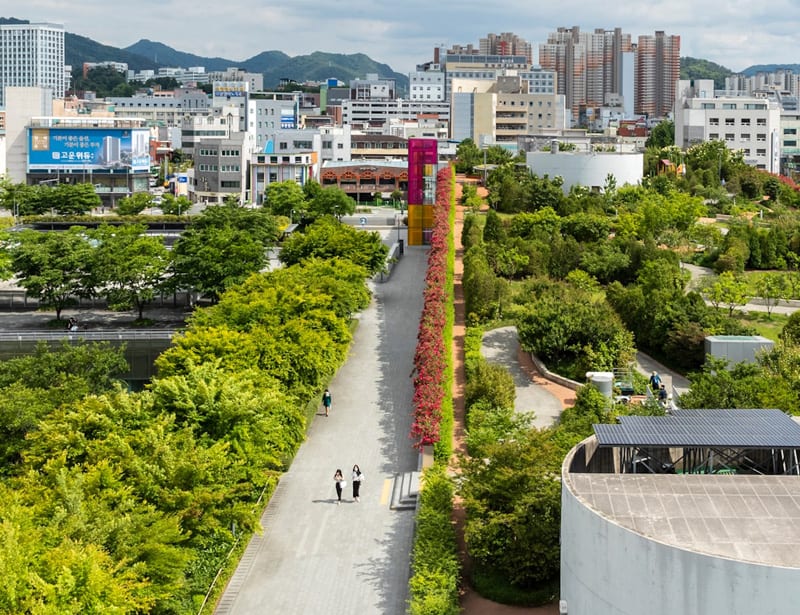
Including urban green space planning in urban development does a lot of good for the environment. First, it helps improve the air quality by fighting air pollution. Plants partake in the intricate process of transporting, assimilating, and decomposing gas and particulate pollutants.
Many cities are prone to chemical and dust pollution, especially in highly industrial areas. Human activities like fossil fuel burning in cars and airplanes produce tiny particles of solid or liquid waste suspended in the air.
Air pollution often causes respiratory problems in humans, and it affects wildlife. However, vertical gardens and green corridors can remove them from the atmosphere. Environmental research shows that grasslands and trees can successfully remove particulate matter from the air.
Also, urban nature can help reduce the risks of global warming by reducing the concentration of carbon dioxide in the atmosphere. Trees can sequester carbon emissions as woody and foliar biomass as they grow. Even soils can act as carbon sinks.
Urban spaces also experience a phenomenon known as the urban heat island effect. It refers to the increase in temperature because of the high concentration of concrete roads, pavements, buildings, and other infrastructures. Creating several green spaces will reduce incidental radiation and protect from UV radiation. Trees and grasses will provide shade, alter wind patterns, and increase evaporative cooling.
Green environments help reduce flooding by intercepting water. A community woodland is an excellent flood alleviation tool. It helps reduce the flooding experienced in urban residential areas while improving water quality and protecting aquatic ecosystems.
Furthermore, a public green space can reduce noise pollution by acting as a buffer. It absorbs aircraft, transportation, construction, and occupational noise. A woodland with trees and shrubs can reduce noise by 10 decibels per 30m.
Social Benefits Provided by Urban Nature
Urban greening has many physical and mental health benefits. Urban green spaces provide urban residents an area to organize and partake in outdoor recreation activities, like walking and cycling. Physical activity is essential to maintain human health. It reduces the risk of developing heart disease, diabetes, and obesity.
However, it is difficult for most people living in urban areas like England to engage in some form of physical exercise. It could be because of financial constraints, lack of open spaces, or inaccessibility.
Studies investigating the health benefits of green cities show a reduction in mortality rates, especially in the Netherlands and Japan. Urban green spaces help encourage the adoption of an active lifestyle. They can also serve as rehabilitative and therapeutic spaces for people recovering from health problems like coronary artery disease1.
Creating new green spaces also goes a long way in improving mental health. Living in European cities can be stressful and anxiety-inducing. Living in a sustainable environment can reduce stress and anxiety by inducing a feeling of peace, hope, and freedom.
An ecological study investigating the effect of natural areas on the mind shows people significantly feel better around nature. The study showed those who took a 50-minute walk in a green space showed decreased anxiety and rumination levels. It also improved their cognitive function3.
It improves our ability to focus, leading to an improvement in our productivity levels. Working or studying within the view of a natural area relaxes the mind and body, making it easier to ignore distractions. Also, sustainable cities reduce crime rates and foster human interaction.
For instance, community gardens bring everyone in the neighborhood together. There's an exchange of culture, traditions, and knowledge. People have fun and develop a sense of community and unity.
Economic Benefits of a Green Space in Urban Environments
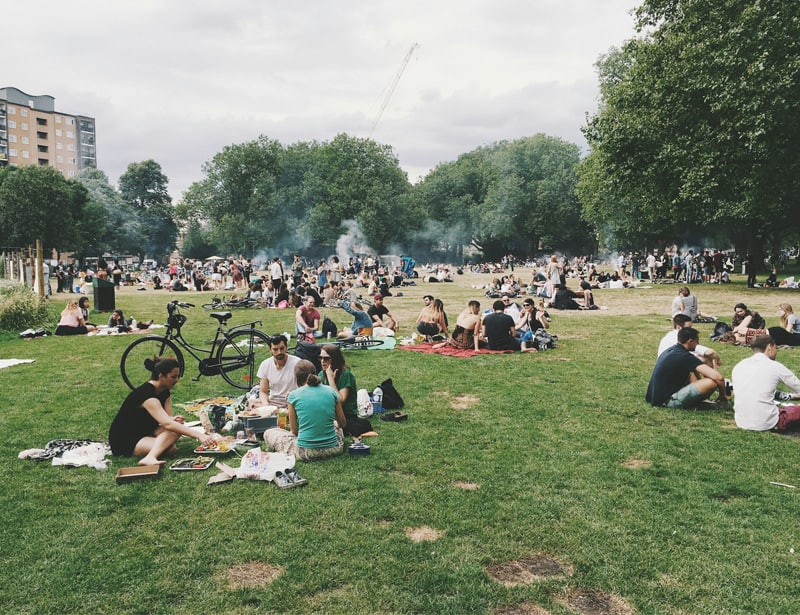
Apart from physical and well-being benefits, developing green spaces in urban areas also improves the city's economy. Urban green areas provide jobs and create new business startups and private investment opportunities2, which increases the city's local gross value added (GVA).
Green spaces also improve the aesthetic appeal of an area, leading to an increment in land and property values. It encourages further property development, thus increasing the local area’s tax receipts.
It also improves the tourism potential of a region. Tourism is one of the most developed industries in the world. It is one of the fastest-growing sectors in Europe, increasing the local and international revenue of the country. Research shows that 85% of tourists in Canada visit green spaces and urban forestry.
It creates more job opportunities for locals. It also supports existing businesses and services. Nature conservation supports tourism by providing spaces for art and culture, wildlife watching, play and relaxation, sports, and celebrations.
Urban Green Spaces Ensures the Survival of Biodiversity.
Urbanization has destroyed many ecosystems and, by extension, wildlife habitats. Adding nature-based solutions to a large expanse of concrete structures will increase the wildlife population and provide them with habitats. It prevents the extinction of wildlife species while improving the chances of reviving threatened species.
Conclusion: Why Are Urban Green Spaces Important?
From the environmental health perspective, urban design must include more green space structures. It provides space for people to engage in a physical activity that improves the quality of public health. Green gentrification benefits everyone- the government, people, wildlife, economies, and the commercial industry. Spend more time in nature.
| 1 |
Lee, A., Jordan, H., & Horsley, J. S. (2015). Value of urban green spaces in promoting healthy living and wellbeing: prospects for planning. Risk Management and Healthcare Policy. |
| 2 |
Saraev, V. (2012). Economic benefits of greenspace: a critical assessment of evidence of net economic benefits. ResearchGate. |
| 3 |
Jiménez, M. P., DeVille, N. V., Elliott, E. G., Schiff, J. E., Wilt, G. E., Hart, J. E., & James, P. (2021). Associations between Nature Exposure and Health: A Review of the Evidence. International Journal of Environmental Research and Public Health. |
| 4 |
World Health Organization. Regional Office for Europe. (2017). Urban green spaces: a brief for action. World Health Organization. Regional Office for Europe. |
Jen’s a passionate environmentalist and sustainability expert. With a science degree from Babcock University Jen loves applying her research skills to craft editorial that connects with our global changemaker and readership audiences centered around topics including zero waste, sustainability, climate change, and biodiversity.
Elsewhere Jen’s interests include the role that future technology and data have in helping us solve some of the planet’s biggest challenges.
Fact Checked By:
Isabela Sedano, BEng.

